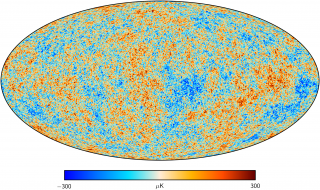Bibcode
Vielva, P.; Martínez-González, E.; Casas, F. J.; Matsumura, T.; Henrot-Versillé, S.; Komatsu, E.; Aumont, J.; Aurlien, R.; Baccigalupi, C.; Banday, A. J.; Barreiro, R. B.; Bartolo, N.; Calabrese, E.; Cheung, K.; Columbro, F.; Coppolecchia, A.; de Bernardis, P.; de Haan, T.; de la Hoz, E.; De Petris, M.; Della Torre, S.; Diego-Palazuelos, P.; Eriksen, H. K.; Errard, J.; Finelli, F.; Franceschet, C.; Fuskeland, U.; Galloway, M.; Ganga, K.; Gervasi, M.; Génova-Santos, R. T.; Ghigna, T.; Gjerløw, E.; Gruppuso, A.; Hazumi, M.; Herranz, D.; Hivon, E.; Kohri, K.; Lamagna, L.; Leloup, C.; Macias-Perez, J.; Masi, S.; Matsuda, F. T.; Morgante, G.; Nakano, R.; Nati, F.; Natoli, P.; Nerval, S.; Odagiri, K.; Oguri, S.; Pagano, L.; Paiella, A.; Paoletti, D.; Piacentini, F.; Polenta, G.; Puglisi, G.; Remazeilles, M.; Ritacco, A.; Rubino-Martin, J. A.; Scott, D.; Sekimoto, Y.; Shiraishi, M.; Signorelli, G.; Takakura, H.; Tartari, A.; Thompson, K. L.; Tristram, M.; Vacher, L.; Vittorio, N.; Wehus, I. K.; Zannoni, M.; The LiteBIRD collaboration
Referencia bibliográfica
Journal of Cosmology and Astroparticle Physics
Fecha de publicación:
4
2022
Número de citas
10
Número de citas referidas
10
Descripción
A methodology to provide the polarization angle requirements for different sets of detectors, at a given frequency of a CMB polarization experiment, is presented. The uncertainties in the polarization angle of each detector set are related to a given bias on the tensor-to-scalar ratio r parameter. The approach is grounded in using a linear combination of the detector sets to obtain the CMB polarization signal. In addition, assuming that the uncertainties on the polarization angle are in the small angle limit (lower than a few degrees), it is possible to derive analytic expressions to establish the requirements. The methodology also accounts for possible correlations among detectors, that may originate from the optics, wafers, etc. The approach is applied to the LiteBIRD space mission. We show that, for the most restrictive case (i.e., full correlation of the polarization angle systematics among detector sets), the requirements on the polarization angle uncertainties are of around 1 arcmin at the most sensitive frequency bands (i.e., ≍ 150 GHz) and of few tens of arcmin at the lowest (i.e., ≍ 40 GHz) and highest (i.e., ≍ 400 GHz) observational bands. Conversely, for the least restrictive case (i.e., no correlation of the polarization angle systematics among detector sets), the requirements are ≍ 5 times less restrictive than for the previous scenario. At the global and the telescope levels, polarization angle knowledge of a few arcmins is sufficient for correlated global systematic errors and can be relaxed by a factor of two for fully uncorrelated errors in detector polarization angle. The reported uncertainty levels are needed in order to have the bias on r due to systematics below the limit established by the LiteBIRD collaboration.
Proyectos relacionados

Anisotropía del Fondo Cósmico de Microondas
El objetivo general de este proyecto es determinar y estudiar las variaciones espaciales y espectrales en la temperatura del Fondo Cósmico de Microondas y en su Polarización en un amplio rango de escalas angulares que van desde pocos minutos de arco hasta varios grados. Las fluctuaciones primordiales en la densidad de materia, que dieron origen a
Rafael
Rebolo López